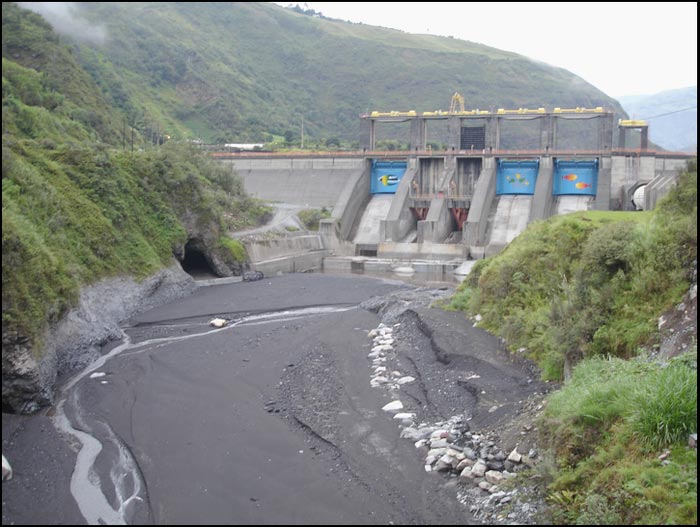In the wake of a severe drought gripping the eastern region of Ecuador, the nation’s hydroelectric power production has experienced a significant drop, plummeting from its usual contribution of 90% to a mere 79%.
This decline in power production, as reported by the National Electricity Operator (Cenace) on October 4, 2023, underscores the critical impact of erratic weather patterns on the country’s energy landscape. The dry season’s unrelenting grip on the Amazon basin and eastern territories has led to reduced flows in the largest hydroelectric plants, with consequential effects on energy generation.
Key power plants
At present, the key players in hydroelectric power generation in the Eastern zone are Paute Molino, contributing 34%, and Coca Codo Sinclair, contributing 25%. They are followed by Agoyán San Francisco (8%) and Sopladora (7%), all of which are grappling with diminished flow rates. Mazar (6%) and Delsitanisagua (3%) also face challenges on the Eastern side, further exacerbating the situation.
While the eastern hydroelectric plants struggle, the western counterparts continue to generate energy without flow-related hindrances. Among them, Minas San Francisco (1%), Manduriacu, and Sarapullo collectively contribute 17% of the total hydroelectric generation, providing a necessary buffer against the region’s energy deficit.
Beyond the climatic impact, Ecuador’s energy infrastructure faces an underlying challenge in meeting growing demand, which escalates by 4% to 5% annually. Notably, this surge in demand necessitates the construction of new alternatives capable of generating between 200 to 300 megawatts per year.
However, despite a six-year period, little progress has been made in this regard. To address this, Esteban Albornoz, a former Minister of Electricity, calls for an emphasis on forward momentum rather than placing blame on existing projects. He stresses the importance of establishing responsibility while concurrently pursuing new projects to accommodate burgeoning demand.
Albornoz also sounds a cautionary note regarding the management of the Mazar reservoir, emphasizing the need to maintain a 400 million cubic meter reserve for critical usage in November and December. Vigilance over the reservoir’s levels during these pivotal months is paramount to avert potential crises.
Stagnated plants
The complexity of Ecuador’s electrical infrastructure is further compounded by aging thermal plants on the western side that necessitate continual maintenance. The Sopladora hydroelectric plant faces internal challenges due to subpar materials in its turbines, resulting in the paralysis of two out of three units. Fortunately, authorities have pledged the reactivation of one unit by Thursday.
Meanwhile, the Toachi Pilatón complex, which includes the Sarapullo Hydroelectric Power Plant, is in various stages of completion. Sarapullo stands as the sole operational unit, while Alluriquín awaits final electro-assembly processes slated for completion in 2024.
Compounding the issues is the gas-dependent Termogás Machala, which requires an increased gas supply to generate its full 230-megawatt capacity. However, a shortage of gas, exacerbated by the delayed Amistad field tender, presents a significant hurdle. Contingency plans involve the potential importation of gas for a six-month period, though feasibility remains uncertain considering the ongoing dry season.
Solutions?
In response to these challenges, Minister of Energy, Fernando Santos Alvite, outlined the government’s plans to implement several projects, collectively capable of generating around 800 megawatts annually. Among these ventures is the signed contract for a photovoltaic station in El Aromo, slated for a location reminiscent of the abandoned Pacific Refinery. Additionally, the new Villonaco project in Loja promises a generation capacity of 100 megawatts.
Regrettably, delays have marred the progress of these projects, with Minister Alvite noting that awards for some were already granted during Minister René Ortiz’s tenure. Upon his return to office in 2022, little had changed.
Finally, the minister revealed that the 500-megawatt renewable energy block project has received authorization, encompassing ten projects spanning solar, wind, and hydroelectric domains. Privately sourced investment is identified as crucial for the success of this ambitious initiative.


0 Comments